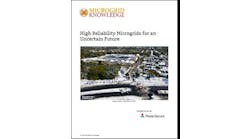By Elisa Wood
December 15, 2010
I have three predictions for 2011.
- When it comes to energy policy, austerity will be in.
- Therefore, energy efficiency will become a favored choice among mayors, governors, state lawmakers and Congress, as government becomes increasingly edgy about the cost of renewable energy.
- The infamous leaky home will finally get some plugging.
My first two predictions are no-brainers. Governments are broke. They will look askance at anything that costs money, no matter how valuable, meaning that some renewable energy technologies will face tough going. Energy efficiency, on the other hand, offers a way to go green while lowering bills, a very appealing proposition at time of heightened economic and environmental concern.
Maybe not so obvious is why 2011 will be the year of the home. Here is my thinking.
Because of smart grid, the home is the new frontier in an energy revolution that shifts attention from the energy producer to the energy consumer. As Phil Harris, CEO of Tres Amigas, pointed out in a recent presentation, the electric grid is a huge machine, half of it devoted to making power and half to consuming it. While we’ve focused heavily over the years on improving production, we’ve barely considered energy use. http://www.youtube.com/watch?v=vyLuXgo4c74.
“Think about that. It’s a single machine, but for 100 years we’ve devoted all of our attention to generation, production and distribution. And how much science have we produced on the other half of the machine, the things that actually use electricity? That is what we have created on planet Earth. Very large systems with a lot of tension on half of the equation and almost none on the other,’ he said.
Smart grid – the integration of information technology into the grid — will shift the balance, giving consumers greater control over the flow of electrons into their homes much the way the Internet has given them control over information flow. This elevates the household from a passive to an active player on the grid. “I truly believe we are going from a utility-controlled environment to a customer-controlled environment,” Harris said.
Attention to household energy use is big ticket item. For example, retrofitting US homes could cut annual energy bills by $21 billion annually, according to the December 2010 report from the National Home Performance Council, “Residential Energy Efficiency Retrofit Programs in the US.” http://www.nhpci.org/
This isn’t lost on energy policymakers, and they are looking at far more than just caulking windows to achieve these savings. The movement is toward the “whole house retrofit,” which looks at a home as a total system.
“It looks not only at many different elements within the home that result in excessive consumption or waste of energy, but also considers the ways that these elements interact,” the NHPC report said. “Whole home retrofit approaches also review at health and safety issues within a home as a crucial feature of a retrofit job, with a commitment to do no harm.”
The report identifies 126 such programs now underway nationwide, many of which offer rebates to homeowners. The New York State Energy Research & Development Authority, for example, recently announced $5,125 incentives for single family homes and higher amounts for multi-family homes when they add “technologies that lower energy costs, reduce waste and water use, and improve indoor air quality.”
Home builders are paying attention. America’s 10 largest publicly traded homebuilders have started to improve their policies and practices relating to the environment and resources, according to a new study by Calvert Asset Management Company. “Green Recovery for America’s Homebuilders? A Survey of Sustainable Practices by the Homebuilding Industry,” evaluates how well major builders are doing when it comes to sustainable practices. The green building market, estimated at $36-49 billion, is expected to increase twofold between 2009 and 2013, according the report. Calvert found that among green initiatives, energy efficiency is the first choice among builders.
“Our survey of the 10 largest publicly traded U.S. homebuilders finds an evolving landscape. Whereas two years ago the industry had not yet begun to embrace sustainability as a core part of building design and construction, companies today have taken many meaningful steps toward developing greener and cleaner homes,” said Rebecca Henson, sustainability analyst at Calvert Asset Management Co. and co-author of the report.
Making predictions about energy is tricky. It’s an industry that can shift direction quickly because of unexpected events – hurricanes, wars, gas and oil supply shifts. But right now it looks pretty clear that the direction energy’s heading is home.





